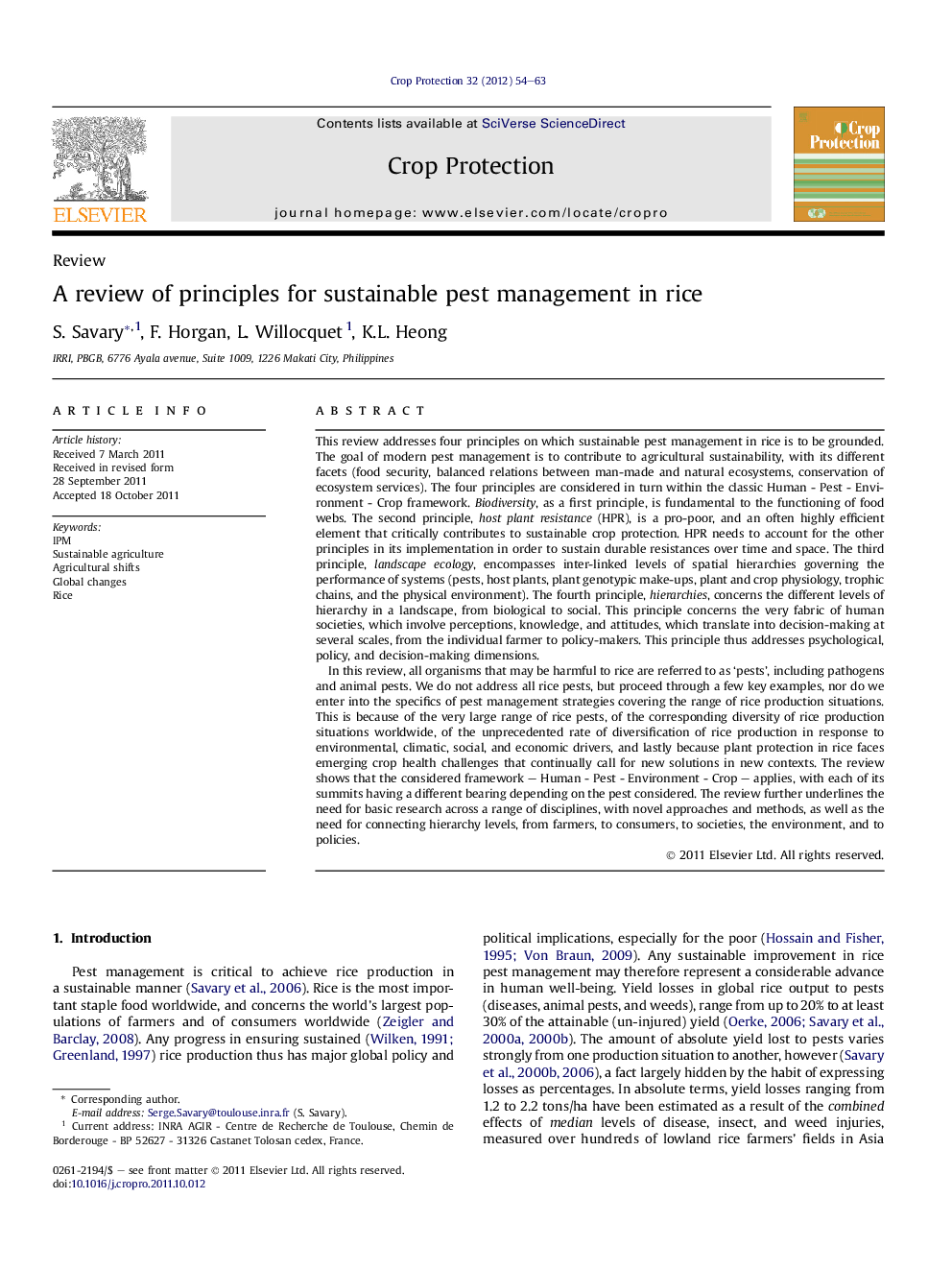| کد مقاله | کد نشریه | سال انتشار | مقاله انگلیسی | نسخه تمام متن |
|---|---|---|---|---|
| 4506449 | 1624355 | 2012 | 10 صفحه PDF | دانلود رایگان |

This review addresses four principles on which sustainable pest management in rice is to be grounded. The goal of modern pest management is to contribute to agricultural sustainability, with its different facets (food security, balanced relations between man-made and natural ecosystems, conservation of ecosystem services). The four principles are considered in turn within the classic Human - Pest - Environment - Crop framework. Biodiversity, as a first principle, is fundamental to the functioning of food webs. The second principle, host plant resistance (HPR), is a pro-poor, and an often highly efficient element that critically contributes to sustainable crop protection. HPR needs to account for the other principles in its implementation in order to sustain durable resistances over time and space. The third principle, landscape ecology, encompasses inter-linked levels of spatial hierarchies governing the performance of systems (pests, host plants, plant genotypic make-ups, plant and crop physiology, trophic chains, and the physical environment). The fourth principle, hierarchies, concerns the different levels of hierarchy in a landscape, from biological to social. This principle concerns the very fabric of human societies, which involve perceptions, knowledge, and attitudes, which translate into decision-making at several scales, from the individual farmer to policy-makers. This principle thus addresses psychological, policy, and decision-making dimensions.In this review, all organisms that may be harmful to rice are referred to as ‘pests’, including pathogens and animal pests. We do not address all rice pests, but proceed through a few key examples, nor do we enter into the specifics of pest management strategies covering the range of rice production situations. This is because of the very large range of rice pests, of the corresponding diversity of rice production situations worldwide, of the unprecedented rate of diversification of rice production in response to environmental, climatic, social, and economic drivers, and lastly because plant protection in rice faces emerging crop health challenges that continually call for new solutions in new contexts. The review shows that the considered framework – Human - Pest - Environment - Crop – applies, with each of its summits having a different bearing depending on the pest considered. The review further underlines the need for basic research across a range of disciplines, with novel approaches and methods, as well as the need for connecting hierarchy levels, from farmers, to consumers, to societies, the environment, and to policies.
► IPM involves biodiversity, plant resistance, landscape ecology, and hierarchies.
► These principles are considered within the Human-Pest-Environment-Crop framework.
► Different levels of hierarchies include decision-making (farmers to policy-makers).
► This framework is considered in a series of key rice diseases and insect pests.
► This generic framework stresses the need for basic interdisciplinary research.
Journal: Crop Protection - Volume 32, February 2012, Pages 54–63